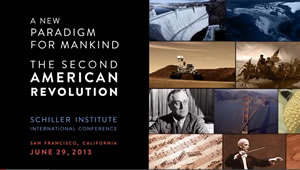 |
NEW WEBSITE: FORUM FOR A NEW PARADIGM
Leibniz, LaRouche, and the U.S.
Link with China, Russia
by Michael Billington
June 2013
 Courtesy of Janus Kramer.
Michael Billington.
|
[This article in PDF format, from EIR]
EIR Asia specialist Michael Billington gave this speech to the Schiller Institute conference in San Francisco on June 29, 2013.1
As has been discussed here, the Obama Administration and its British controllers are driving the world very rapidly toward war against Russia and China, over Syria, which Russia will not allow to be turned over to terrorist mobs as was done in Libya; meanwhile in Asia, Obama has adopted the Air-Sea Battle doctrine for a war with China.2
My intention here is to show you that the idea that Russia and China are natural adversaries of the United States is entirely a British concoction, despite the fact that many dumbed-down Americans have swallowed the British Kool-Aid. The fact is that the natural connection between the United States and Asia—both Russia and China—began long before the founding of the United States as a nation-state, and even before the “discovery” of America by Christopher Columbus. America began, in fact, as a thought-object in the mind of some of the greatest minds of Western civilization—in particular, Nicholas of Cusa and Gottfried Leibniz. It was as real then as it is today, for the nation is not just a physical location, or a government, recognized only by our senses, but it is a dynamic process, an idea, the City on the Hill, the New World.
Like Lyndon LaRouche today, Cusa and Leibniz not only dreamed about the future, they saw the future—both the horror of a future under imperial domination, and the great potential of the New World which they set about to create a republic free of the oligarchical control of European monarchs and global Empire. As we will see, Gottfried Leibniz had already established the natural alliance between the future United States and both Russia and China, before the official founding of our nation.
That natural alliance was restored under Franklin Roosevelt, to defeat the British-created Nazi movement, and is finally coming back into being today under the inspiration of Lyndon and Helga LaRouche, based on the concept of a New Paradigm for the Survival of Civilization. Great projects, such as the Eurasian Land-Bridge, and the tunnel under the Bering Strait, uniting Russia, China, and the United States by rail, and bringing them together into a common mission for the future, can and must fulfill the creative discoveries of our forefathers, and end the power of Empire once and for all.
Leibniz Brings ‘News from China’
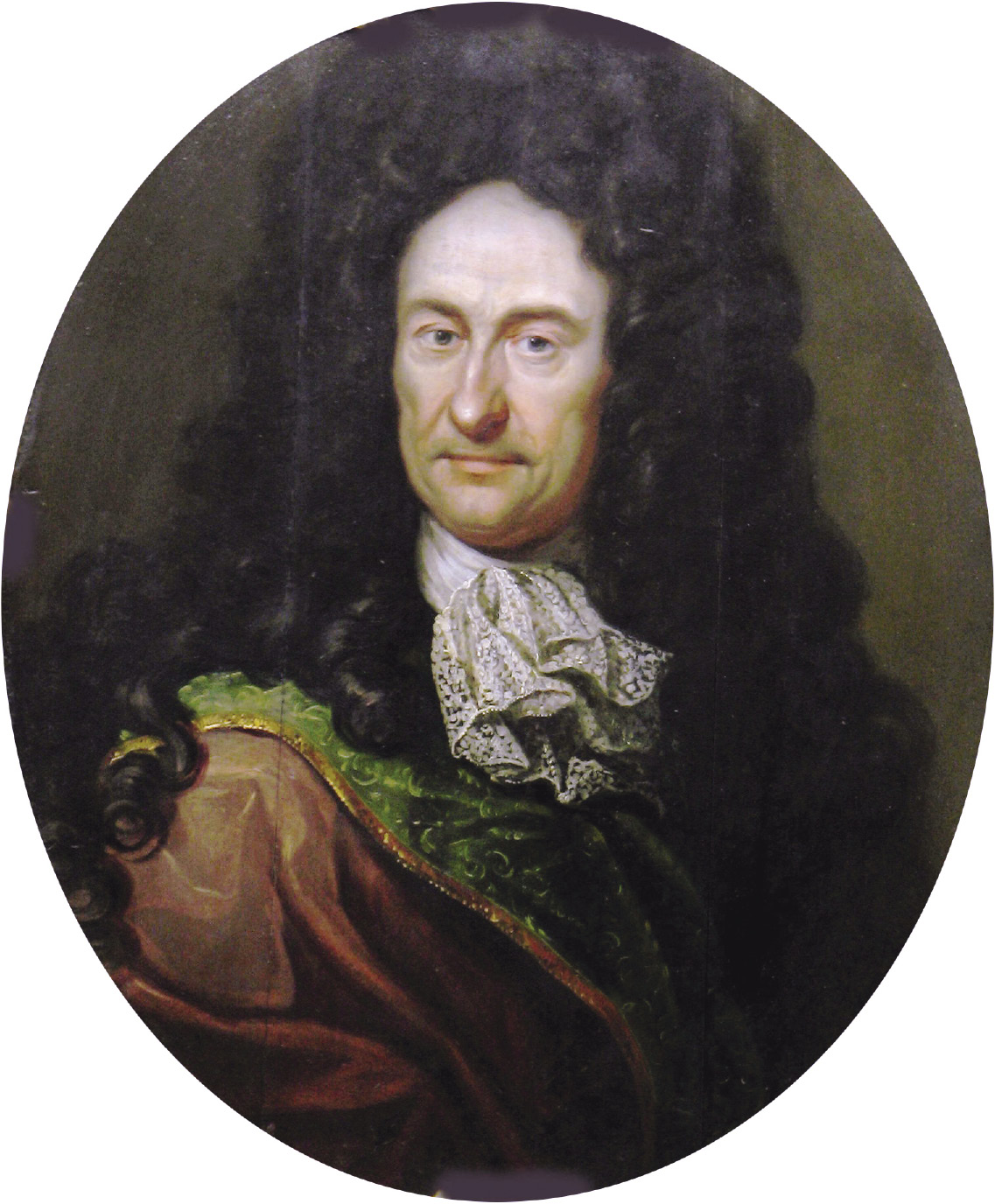 Gottfried Leibniz collaborated with Peter the Great in Russia, to establish the Russian Academy of Sciences in 1724. His “Novissima Sinica” (1697) analyzed the writings of Confucius, Mencius, and Zhu Xi, and made them known across Europe.
|
The discovery of America by Columbus, as is now well known, can be attributed directly to Nicholas of Cusa, and to his close friend and colleague Paolo Toscanelli, who suggested to Columbus that the Far East could be reached by sailing west, including the belief that a New World lay in between Europe and Asia. Columbus carried with him on his voyage a map provided by Toscanelli.
As I reported last November in Frankfurt, at the first of these New Paradigm conferences, Leibniz was not only a follower of Cusa, and the seminal philosopher and scientist of his age, but also one of the great statesmen of history. He worked with Peter the Great in Russia to establish the Russian Academy of Sciences in 1724, worked closely with the Jesuit missionaries who had become the core of the scientific institutions in China, and even arranged a treaty between Russia and China over border issues and cooperation—the first East-West treaty in history. He published a journal, Novissima Sinica (News from China), in 1697, which analyzed the writings of Confucius, Mencius, and the greatest mind of the 12th-Century Song Dynasty Renaissance, Zhu Xi, which had been translated by the Jesuits, and made them known across Europe. A quote from that journal will be relevant to my report on the developments in the U.S.
I consider it a singular plan of the fates that human cultivation and refinement should today be concentrated, as it were, in the two extremes of our continent, in Europe and in China, which adorns the Orient as Europe does the opposite edge of the Earth. Perhaps Supreme Providence has ordained such an arrangement, so that, as the most cultivated and distant peoples stretch out their arms to each other, those in between may gradually be brought to a better way of life.
In his analysis of the Confucian philosophic outlook, Leibniz said: “It is pure Christianity, insofar as it renews the natural law inscribed in our hearts.”
Remember this concept for later.
Leibniz in America
The American Founding Fathers were profoundly affected by the works of Leibniz, and maintained contact with the Leibniz circles in Russia, especially in the Russian Academy of Sciences. During the American War of Independence, British warships were seizing Russian (and other) ships which were trading with the colonies, until Benjamin Franklin and other members of his American Philosophic Society made direct appeals to their associates in the Academy of Sciences in St. Petersburg and certain Russian diplomatic contacts, leading to the creation of the League of Armed Neutrality. The League of Armed Neutrality declared that Russia (and other officially neutral nations) had the right to trade with the colonies, and would consider any British attack on neutral merchant vessels as an act of war.
After the war, American naval hero John Paul Jones went to Russia, and helped build the Russian Navy, and, of course, America’s greatest statesman John Quincy Adams became the first Minister to Russia in 1809. Leading Russian circles translated and published Alexander Hamilton’s “Report on Manufactures” in 1807, telling the Tsar that its principles were fully applicable for developing Russia as a continental country. And the U.S. Army Corps of Engineers worked directly on Russia’s first railroad, from St. Petersburg to Moscow, in the 1840s.
The British spent much of the 19th Century trying to break up the United States and Russia (and China), through warfare and economic sabotage. The Crimean War against Russia in the 1850s was aimed at splitting up Russia; it was soon followed by the British-instigated Civil War in the United States, intended to split this nation, and to maintain free trade in slaves, and in cheap cotton from the slave plantations. To some extent, the Civil War was also an extension of the two British Opium Wars against China in the 1840s and 1850s—again, waging war to defend the free trade in slaves, and also opium.
Again, the U.S. ties with Russia were crucial in the victory over the British Confederacy. How many people today know that the entire Russian fleet was deployed into New York Harbor, and also, right here, near San Francisco, in 1863, at the crucial point in the Civil War? The Russians had informed the British and their French allies that, were they to proceed with their plan to intervene on behalf of the Confederacy (a peace mission, you understand, a humanitarian intervention to protect civilians, due to the Brits’ moral concern and the responsibility to protect civilians in the Confederacy from the marauding Northern armies), then the Russians would intervene to defend the legitimate government of the United States.
If this sounds familiar to what is going on in Syria today, that is no coincidence.
Lincoln and Russia
 Harper’s Weekly (1864)
Russian Tsar Nicholas II send the Russian fleet to New York Harbor and to San Pablo Bay, California (shown here), in 1863, to defend Lincoln’s Union from the pro-Confederacy British and French imperial powers.
|
President Abraham Lincoln also understood, even as war was breaking out, that the United States was extremely vulnerable, as long as the continent remained divided. California had become a state in 1850, after the 1848 Gold Rush brought tens of thousands of Americans—and thousands of Chinese—to California, but transport to the West Coast took several months, and was treacherous. This was one reason that part of the Russian fleet came to San Francisco—to prevent any British incursions in the unprotected region on the Pacific.
So Lincoln and the Congress launched the Transcontinental Railroad project in 1862, even as war was raging, to connect the nation from east to west by rail. The result, of course was the development of cities and farms across the continent, and eventual statehood for all the area in-between.
Another purpose was the outreach to Asia. The U.S. had been largely excluded from Asia—in fact, our major commerce in Asia before the Civil War had been carried out by Boston merchants, outright British agents, who were openly part of the British opium trade—including the family of William Weld, the Massachusetts U.S. Attorney who prosecuted LaRouche in the 1980s.
|
FIGURE 1
The Trans-Continental Railroad 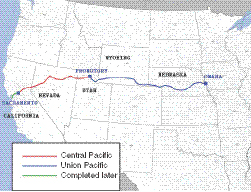 |
|
FIGURE 2  U.S. Passport Service
|
Efforts by courageous missionaries and others to counter the British in China and Asia generally were easily crushed by the overwhelming British power. But the Transcontinental Railroad was an arrow through the continent pointing directly at China; it opened up the growing industrial might of the Union to trade and investment in Asia (Figure 1). It is well known that 80% of the workforce on the Railroad was Chinese, and that the Chinese workers were greatly respected for the quality of their work.
Less well known, is that Russian engineers were in San Francisco at that time, and, as the telegraph wires spanned the North American continent along with the railroad, so also, Russia and the U.S. began building telegraph wires up the northern coast of the Pacific, through Russian America (now Alaska), with the intention of crossing the Bering Strait and crossing Russia all the way to St. Petersburg. The Bering Strait project was only deserted in 1867, when the Trans-Atlantic cable was successfully laid, but it had opened up the region, and contributed to the U.S. purchase of Alaska from the Russians at that time. And of course, the project is now being revived by the LaRouche movement, and the Russians, in the form of the rail connection over the Bering Strait, connected to the NAWAPA project and related great projects internationally—the International Land-Bridge.
Following the Civil War, Lincoln’s economist Henry Carey carried the American System and the idea of transcontinental nation building to Europe—to Germany, where Bismarck created the German nation based on American System principles; and to Russia, where Count Witte led the effort to create the Trans-Siberian Railroad, once again connecting the Atlantic to the Pacific, this time across the Eurasian continent (Figure 2).
The Oldest and Newest ‘Empires’
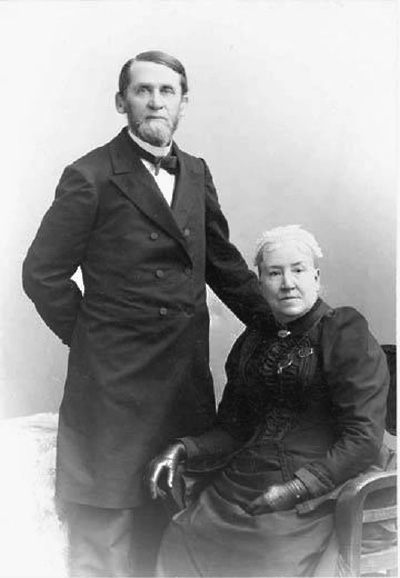 Rev. William Speer (shown here with his wife), a Presbyterian missionary, went to Canton (Guangzhou) in 1846 to open the first Presbyterian mission there. He later worked with Chinese immigrants in San Francisco, opening the first Asian Christian Church in the U.S.
|
On the U.S.-China connection, I want to talk about a single individual whom you have almost certainly never heard of. But that very fact speaks volumes about what has happened to this nation. Rev. William Speer was a dentist and a Presbyterian missionary who went to Canton (Guangzhou) in 1846 to open the first Presbyterian mission there. He became fluent in Cantonese, but was forced to leave for health reasons after five years. He then spent most of the rest of his life working with Chinese immigrants in San Francisco, opening the first Asian Christian Church in the U.S. (now called the Presbyterian Church in Chinatown), as well as a school and a dispensary (now called the Chinese Hospital). He spoke widely, published many pamphlets in both English and Chinese, and authored a book in 1870 titled: The Oldest and the Newest Empires, China and the United States. (Don’t be distracted by the term “empire”—he used the term benignly to mean a nation with a universal mission.)
I want to read to you several passages from his book, which you will immediately recognize as coming from the Leibnizian tradition. On Speer’s view of China in America:
“It is hard to account for the common estimate of China and its people in Great Britain and America otherwise than by attributing it to the influence of the bad East India Company and the diabolical opium trade.”
He reports that nearly all the books on China were written by servants of the British government or by British missionaries, all corrupted by two fatal influences, namely, the monarchy, and their self-enrichment from the opium trade. So you see he is not confused about Empire.
Reflecting his debt to Leibniz and Leibniz’s global vision, consider these passages. On the nature of the Chinese people:
“Both Confucius and Mencius saw with bitterness the utter inefficiency of truth which looks no higher than earth to reform society or to stay the power of human passions.” Speer believed that there were “few nations of the world among whom the freedom of the people is more large, more squarely founded upon their intelligence, or more carefully guarded against despotism, than in China.” He notes that in the Middle Ages, China was the greatest and most civilized kingdom on Earth, but China had remained stationary while the West moved forward with the coming of the Renaissance.
In a quotation from Leibniz in all but name—and recall the quote I read from Leibniz at the beginning—Speer wrote: “For centuries past the most philosophic minds have predicted the vast consequences which should ensue when the two opposite currents of empire—one eastward, one westward, since the beginning of time—should at last meet and flow together. Upon our Pacific Coast, this consummating event of the history of the world has now commenced.”
And on the nature of the human being, he again reflects Leibniz’s insistence that the truth is written in our hearts, referring to “the eternal principles of right which the Governor of the world has written in the chambers of the human heart and made deeper and more authoritative than any statutes of human appointment.” Alexander Hamilton, he writes, “presents their nature with the clearness of the light of the Sun”:
“The Deity has constituted an eternal and immutable law, which is obligatory upon all mankind, prior to any human institution whatever. He endowed man with rational facilities by the help of which to discern and pursue such things as were consistent with his duty and interest, and invested him with the inviolable right to personal liberty and personal safety. The sacred rights of mankind are not to be rummaged for among old parchments or musty records. They are written as with sunbeams, in the whole volume of human nature, by the hand of Divinity itself, and can never be erased or obscured by mortal power.”
Elsewhere, he quotes, essentially, again without naming him, from Abraham Lincoln’s Second Inaugural Address. Remember this is published in 1870 (just five years after the end of the Civil War): “The Ruler [referring here to God], in due time, asserts and displays divine justice and power by the terrible punishment of oppressors and wrong-doers, and compensation of those who have suffered. The history of African slavery and the judgments it brought upon us is surely the lesson which this nation should never forget.”
And finally, on his global vision: “Three empires fill the vision of the future—the U.S., Russia, and China. Great Britain alone compares with them in the extent of her colonial possessions; but hers are remote and widely scattered, and will, when ripe as to the divine purpose, fall away from her, as the U.S. has done, and become centers of independent influence. Each [the U.S., Russia, and China] are animated throughout by the same general spirit, and possesses a certain unity in aims, laws, language, social habits, and religious sentiments.”
Conclusion
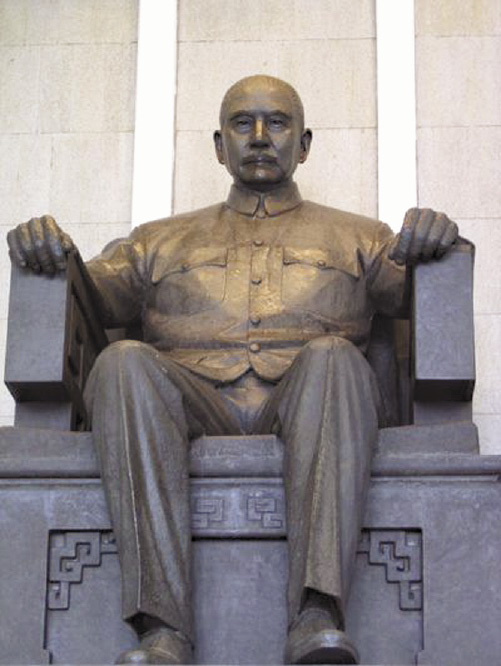 Sun Yat-sen was trained by American missionaries who were steeped in the tradition of Alexander Hamilton and Abraham Lincoln. Sun went on to build a republic in China based on those American System principles. This statue, modelled on the one in the Lincoln Memorial, is located in the Sun Yat-sen Memorial in Taipei, Taiwan.
|
This vision was snuffed out, as the British, as they have done repeatedly in our nation’s history, succeeded in using ignorance and corruption to unleash in the United States an era of racist exclusion laws and similar policies to undermine the assimilation of the Chinese into the U.S. melting pot. Reverend Speer fought this insanity, and also spent some time in Hawaii, where later, the great Chinese revolutionary Sun Yat-sen was trained by American missionaries steeped in the tradition of Alexander Hamilton and Abraham Lincoln, and went on to build a Republic in China based on those American System principles.
The mission today is the same, but the consequences of failure far greater. Transforming the U.S., and reestablishing the historic alliances with Russia and China, are necessary if civilization is to survive. LaRouche has emphasized repeatedly that we must restore not only the vision, but the way of thinking itself, of the great minds who have shaped this nation, such as Cusa and Leibniz, and LaRouche, who saw the future, acted to destroy Empire, and created the City upon the Hill. It is ours to lose, or to create anew.
1. Previous coverage of the conference, including keynotes by Lyndon and Helga LaRouche can be found in EIR, July 12, and July 19, 2013.
2. See Michael Billington, “ ‘Air-Sea Battle’ Is a Plan for War on China,” EIR, June 28, 2013.
